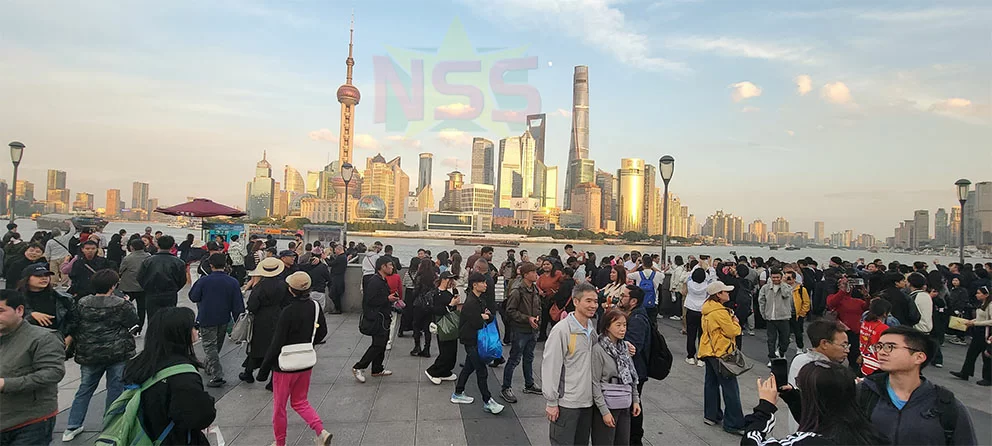Shanghai, China’s largest city, stands as a global powerhouse in economics, trade, and culture. Nestled at the mouth of the Yangtze River, it serves as a vital port and financial hub, attracting international investments and businesses. The city is renowned for its dynamic blend of modernity and tradition, where towering skyscrapers coexist with historic neighborhoods and cultural landmarks. Shanghai plays a pivotal role in China’s rapid economic growth and global integration, making it a city of immense significance.
During a visit by participants of the China International Press Communication Center 2025 Program, the city’s cultural melting pot and thriving innovation were immediately evident. Shanghai’s substantial investments in infrastructure, technology, and sustainable development have positioned it as one of the world’s most progressive cities. Its strategic location, diverse economy, and rich history make it not only an economic powerhouse but also a cultural icon shaping China’s future.
The Bund: A Historical Waterfront
Our first stop was The Bund, an iconic waterfront along the western bank of the Huangpu River. Bustling with activity, The Bund is famed for its row of historic buildings that reflect Shanghai’s colonial and trading history. As the sun sets, the waterfront is bathed in a golden glow, enhancing its charm. Developed in the late 19th and early 20th centuries, The Bund became the financial and commercial heart of Shanghai, influenced by Western powers. Architecturally, it offers an eclectic mix of styles, including neoclassical, art deco, and gothic, with notable structures like the Peace Hotel and the Custom House. Today, The Bund symbolizes Shanghai’s openness and modernization, serving as a popular tourist attraction and cultural emblem.
Shanghai Tower: A Modern Marvel
Next, we visited the Shanghai Tower, a hypermodern skyscraper in the Lujiazui financial district. Standing at 632 meters, it is China’s tallest building and the second tallest in the world, after Dubai’s Burj Khalifa. The tower’s observation deck offers breathtaking views of the city, reached via a high-speed elevator that ascends at 18 meters per second. Despite the crowds, the experience is worth the 190 yuan (approximately $27) ticket price. The Shanghai Tower is a testament to China’s technological advancement, economic strength, and sustainable architecture, featuring energy-efficient systems and innovative construction techniques.
A Magical Boat Ride on the Huangpu River
Our journey concluded with a boat ride on the Huangpu River, offering a unique perspective of The Bund and the Shanghai Tower. Despite the chilly weather, the experience was unforgettable. The illuminated waterfront, with its ever-changing colors, created a fairy-tale-like atmosphere. The boat trip provided a different view of the Shanghai Tower, highlighting its sleek, spiraling design that reduces wind load. The tower, completed in 2015, houses offices, hotels, shopping centers, and observation decks, symbolizing Shanghai’s rapid growth and modernization.
The Bund, viewed from the river, resembles an open-air museum of Western architectural styles from the early 20th century. Each building, originally housing foreign banks, trading firms, or consulates, reflects the identity and prestige of its owners. After approximately half an hour, the boat returned to the dock, leaving us with magical memories of a city that seems straight out of a storybook.
